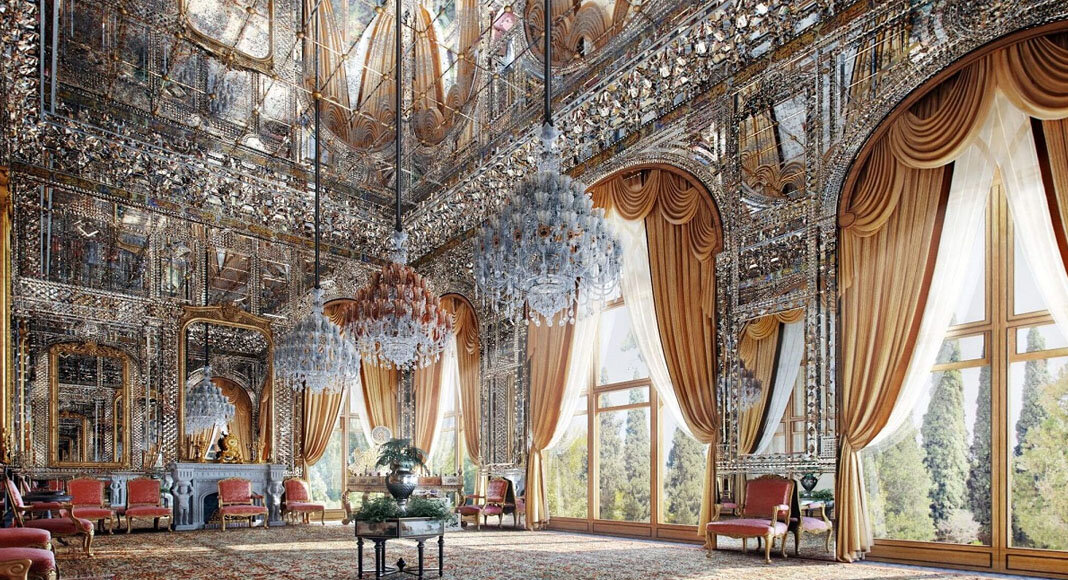Centuriesold carpets and a mystery unveiled at Golestan Palace
Centuries-old carpets and a mystery unveiled at Golestan Palace
TEHRAN – In an unveiling ceremony held at the iconic Shams-ol-Emareh edifice within the UNESCO-registered Golestan Palace, researchers presented 20 historical carpets selected from a collection some of which shed light on a long-standing mystery surrounding the palace’s architectural history.

Speaking at the event on Monday, Touraj Jouleh, a renowned researcher and expert in Iranian handwoven carpets, detailed documentation and analysis of the palace’s carpets have revealed that Golestan Palace once featured three Ayeneh (Mirror) Halls, each adorned with its own custom-made carpet. Of these halls, only one remains intact today.
Jouleh shared his findings during the event, which marked the debut display of around 20 carpets from the palace’s treasure trove. He explained that Golestan Palace houses 343 handwoven pieces, with 25 carpets meticulously documented so far. Among them is an impressive 110-square-meter carpet once used in the Ayeneh Hall, which has since been retired from public display.
Rediscovery of lost halls
The research revealed that the second Ayeneh Hall belonged to a structure called the “Emarat-e Khorouji” (Exit Edifice), ordered for demolition by Naser al-Din Shah Qajar after his return from Europe.
Jouleh noted that a unique carpet from this hall, preserved in Golestan Palace, offers a tangible link to the now-lost structure.
The third Ayeneh Hall, identified through the study of Shams-ol-Emareh’s architectural remnants, also had a custom carpet. Researchers are currently documenting this piece, with plans to unveil their findings soon.
Historical connections and international interest
Jouleh highlighted the global significance of the research. Articles based on this documentation have been published internationally, sparking collaboration with museums worldwide.
For example, a Bakhtiari carpet documented at Golestan was found to have a matching pair in Tehran’s bazaar and a third version housed in a Pennsylvania museum.
Further discoveries include exquisite carpets from south Khorasan and Malayer, known for their intricate patterns and historical ties to royal commissions. One standout piece, potentially Naser al-Din Shah’s personal prayer rug, reflects the exceptional craftsmanship of its time.
Public exhibition and preservation efforts
The exhibition also celebrates the reopening of Shams-ol-Emareh after six months of renovations. Displayed on the edifice’s first floor, the 20 featured carpets will remain accessible to visitors until the end of the year (March 20).
As Jouleh emphasized, accurate documentation and preservation are vital for maintaining Iran’s cultural heritage. The ongoing efforts aim to make the Golestan Palace carpet collection accessible to researchers and enthusiasts worldwide.
As mentioned by organizers, the unveiling not only reintroduces the historical treasures of Golestan Palace but also invites deeper exploration into its forgotten architectural wonders.
Glimpses of Persian carpet
Persian carpets are sought after internationally, with patterns of Persian garden being arguably the most characteristic feature of them all. Weavers spend several months in front of a loom, stringing and knotting thousands of threads. Some practice established patterns. Some make their own.
Each Persian carpet is a scene that seems ageless, a procedure that can take as long as a year. These efforts have long put Iran’s carpets among the most complex and labor-intensive handicrafts in the world. When the weaving is finally done, the carpet is cut, washed, and put out in the sun to dry.
Throughout history, invaders, politicians, and even enemies have left their impact on Iran’s carpets. As mentioned by the Britannica Encyclopedia, little is known about Persian carpet-making before the 15th century, when art was already approaching a peak.
Golestan Palace
One of the top things to do in the Iranian capital is visiting the most magnificent historical monument downtown; the UNESCO-registered Golestan Palace.
This majestic complex was once the official residence of the Qajar monarchs who ruled the country between 1789 and 1925. It displays a remarkable mixture of ancient Persian and contemporary European architectural styles, which characterized much of Iranian art in the 19th and 20th centuries.
UNESCO states that the complex showcases the architectural and artistic achievements of the Qajar era, highlighting the integration of European motifs and styles into traditional Persian art.
AM
source: tehrantimes.com